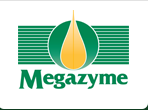L-MalicAcid(Regular)AssayKit,forthespecificassayofL-malicacid(L-malate)inbeveragesandfoodproducts.
Grapeandwineanalysis:Oenologiststoexploitadvancedtestkits.
Charnock,S.C.&McCleary,B.V.(2005).RevuedesEnology,117,1-5.
LinktoArticle
ReadAbstract
Itiswithoutdoubtthattestingplaysapivotalrolethroughoutthewholeofthevinificationprocess.Toproducethebestposs
IBLequalitywineandtominimiseprocessproblemssuchas“stuck”fermentationortroublesomeinfections,itisnowrecognisedthatifpossibletestingshouldbeginpriortoharvestingofthegrapesandcontinuethroughtobottling.Tr
ADItionalmethodsofwineanalysisareoftenexpensive,timeconsuming,requireeitherelaborateequipmentorspecialistexpertiseandfrequentlylackaccuracy.However,enzymaticbio-analysisenablestheaccuratemeasurementofthevastmajorityofanalytesofinteresttothewinemaker,usingjustonepieceofapparatus,thespectrophotometer(
seepreviousissueNo.116foradetailedtechnicalreview).Grapejuiceandwineareamenabletoenzymatictestingasbeingliquidstheyarehomogenous,easytomanipulate,andcangenerallybeanalysedwithoutanysamplepreparation.
Megazyme“advanced”winetestkitsgeneralcharacteristicsandvalidation.
Charnock,S.J.,McCleary,B.V.,Daverede,C.&Gallant,P.(2006).ReveuedesOenologues,120,1-5.
LinktoArticle
ReadAbstract
ManyoftheenzymatictestkitsareofficialmethodsofprestigiousorganisationssuchastheAssociationofOfficialAnalyticalChemicals(AOAC)andtheAmericanAssociationofCerealChemists(AACC)inresponsetotheinterestfromoenologists.Megazymedecidedtouseitslonghistoryofenzymaticbio-analysistomakeasignificantcontributiontothewineindustry,bythedevelopmentofarangeofadvancedenzymatictestkits.Thistaskhasnowbeensuccessfullycompletedthroughthestrategicandcomprehensiveprocessofidentifyinglimitationsofexistingenzymaticbio-analysistestkitswheretheyoccurred,andthenusingadvancedtechniques,suchasmolecular
BIOLOGy(
photo1),torapidlyovercomethem.Noveltestkitshavealsobeendevelopedforanalytesofemerginginteresttotheoenologist,suchasyeastavailablenitrogen(
YAN;seepages2-3ofissue117article),orwherepreviouslyenzymesweresimplyeithernotavailable,orweretooexpensivetoemploy,suchasforD-mannitolanalysis.
AreEnterococcuspopulationspresentduringmalolacticfermentationofredwinesafe?(K-LMAL-58A)
Pérez-Martín,F.,Seseña,S.,Izquierdo,P.M.&Palop,M.L.(2014).FoodMicrobiology,42,95-101.
LinktoArticle
ReadAbstract
Theaimofthisstudywasthegeneticcharacterisationandsafetyevaluationof129Enterococcusisolatesobtainedfromwineundergoingmalolacticfermentation.GeneticcharacterisationbyrandomlyamplifiedpolymorphicDNA-PCRdisplayed23genotypes.25isolatesrepresentativeofallgenotypeswereidentifiedasEnterococcusfaeciumbyspecies-specificPCRandassayedforantibioticresistance,presenceofvirulencegenesandaminobiogeniccapacity,bothindecarboxylasemediumandwine.Theaminobiogeniccapacityinwinewasanalysedinpresence(assay1)andabsence(assay2)ofOenococcusoeniCECT7621.Resistancetotetracycline,cotrimoxazol,vancomycinandteicoplaninwasexhibitedby96%ofthestrains,butnoneofthemharbouredtheassayedvirulencegenes.Allofthestrainsharbouredthetyrosinedecarboxylase(tdc)gene,while44%werepositivefortyramineindecarboxylasemedium.Onlyfiveoutof25strainssurvivedinwineaftersevendaysofincubation,andwhenconcentrationsofbiogenicaminesinwinesweredeterminedbyHPLC,onlythosewinesinwhichthefivesurvivingstrainsoccurredcontainedbiogenicamines.Histamine,putrescineandcadaverineweredetectedinwinesfrombothassays,althoughconcentrationswerehigherinassay2.TyramineandphenylethylamineweredetectedonlyinabsenceofO.oeni.Thisresearchcontributesfortheknowledgeofsafetyaspectsofenterococcirelatedtowinemaking.
GeneticdiversityofOenoccoccusoeniisolatedfromwinestreatedwithphenolicextractsasantimicrobialagents.(K-LMAL-58A)
García-Ruiz,A.,Tabasco,R.,Requena,T.,Claisse,O.,Lonvaud-Funel,A.,Bartolomé,B.&Moreno-Arribas,M.(2013).FoodMicrobiology,36(2),267-274.
LinktoArticle
ReadAbstract
Moleculartechniqueshavebeenappliedtostudytheevolutionofwine-associatedlacticacidbacteriafromredwinesproducedintheabsenceandpresenceofantimicrobialphenolicextracts,eucalyptusleavesandalmondskins,andtogeneticallycharacterizerepresentative
Oenococcusoenistrains.MonitoringmicrobialpopulationsbyPCR-DGGEtargetingthe
rpoBgenerevealedthat
O.oeniwas,asexpected,thespeciesresponsibleformalolacticfermentation(MLF).Representativestrainsfrombothextract-treatedandnot-treatedwineswereisolatedandallwereidentifiedas
O.oenispecies,by16SrRNAsequencing.Typingofisolated
O.oenistrainsbasedonthemutationofthe
rpoBgenesuggestedamorefavorableadaptationofLstrains(
n=63)thanHstrains(
n=3)toMLF.Moreover,PFGEanalysisoftheisolated
O.oenistrainsrevealed27differentgeneticprofiles,whichindicatesarichbiodiversityofindigenous
O.oenispeciesinthewinery.Finally,ahighernumberofgenetic
Markerswereshowninthegenomeofstrainsfromcontrolwinesthanstrainsfromwineselaboratedwithphenolicextracts.Theseresultsprovideabasisforfurtherinvestigationofthemolecularandevolutionarymechanismsleadingtotheprevalenceof
O.oeniinwinestreatedwithpolyphenolsasinhibitorcompounds.
AnaerobicorganicacidmetabolismofCandidazemplininaincomparisonwithSaccharomyceswineyeasts.(K-LMAL-58A)
Magyar,I.,Nyitrai-Sárdy,D.,Leskó,A.,Pomázi,A.&Kállay,M.(2014).InternationalJournalofFoodMicrobiology,178,1-6.
LinktoArticle
ReadAbstract
Organicacidproductionunderoxygen-limitedconditionshasbeenthoroughlystudiedintheSaccharomycesspecies,butpracticallyneverinvestigatedinCandidazemplinina,whichseemstobeanacidogenicspeciesunderoxidativelaboratoryconditions.Inthisstudy,severalstrainsofC.zemplininaweretestedfororganicacidmetabolism,incomparisonwithSaccharomycescerevisiae,SaccharomycesuvarumandCandidastellata,underfermentativeconditions.OnlyC.stellataproducedsignificantlyhigheracidityinsimpleminimalmedia(SM)withlowsugarcontentandtwodifferentnitrogensources(ammoniaorglutamicacid)atlowlevel.However,theacidprofiledifferedlargelybetweentheSaccharomycesandCandidaspeciesandshowedinversetypesofN-dependenceinsomecases.SuccinicacidproductionwasstronglyenhancedonglutamicacidinSaccharomycesspecies,butnotinCandidaspecies.2-oxoglutarateproductionwasstronglysupportedonammoniumnitrogeninCandidaspecies,butremainedlowinSaccharomyces.Candidaspecies,C.stellatainparticular,producedmorepyruvicacidregardlessofN-sources.Fromtheresults,weconcludedthattheanaerobicorganicacidmetabolismsofC.zemplininaandC.stellataaredifferentfromeachotherandalsofromthatoftheSaccharomycesspecies.Intheformationofsuccinicacid,theoxidativepathwayfromglutamicacidseemstoplaylittleornoroleinC.zemplinina.ThereductivebranchoftheTCAcycle,however,producesacidicintermediates(malic,fumaric,andsuccinicacid)inalevelcomparablewiththeproductionoftheSaccharomycesspecies.Anunidentifiedorganicacid,whichwasproducedonglutamicacidonlybytheCandidaspecies,needsfurtherinvestigation.
Antimicrobialphenolicextractsabletoinhibitlacticacidbacteriagrowthandwinemalolacticfermentation.(K-LMAL-58A)
García-Ruiz,A.,Cueva,C.,González-Rompinelli,E.M.,Yuste,M.,Torres,M.,Martín-Álvarez,P.J.,Bartolome,B.&Moreno-Arribas,M.(2012).FoodControl,28(2),212-219.
LinktoArticle
ReadAbstract
Thepurposeofthisstudywastodeterminewhetherphenolicextractswithantimicrobialactivitymaybeconsideredasanalternativetotheuseofsulfurdioxide(SO
2)forcontrollingmalolacticfermentation(MLF)inwinemaking.Inhibitionofthegrowthofsixenologicalstrains(
LactobacillushilgardiiCIAL-49,
LactobacilluscaseiCIAL-52,
LactobacillusplantarumCIAL-92,
PediococcuspentosaceusCIAL-85,
OenococcusoeniCIAL-91and
O.oeniCIAL-96)byphenolicextracts(
n=54)fromdifferentorigins(spices,flowers,leaves,fruits,legumes,seeds,skins,agriculturalby-productsandothers)wasevaluated,beingthesurvivalparameterIC
50calculated.Atotalof24extractswerefoundtosignificantlyinhibitthegrowthofatleasttwooftheLABstrainsstudied.Someoftheseextractswerealsoactiveagainsttwoaceticacidbacteria(
AcetobacteracetiCIAL-106and
GluconobacteroxydansCIAL-107).Transmissionelectronmicroscopyofthebacteriacellsafterincubationwiththephenolicextractconfirmeddamageoftheintegrityofthecellmembrane.Finally,totestthetechnologicalapplic
ABIlityoftheextracts,theeucalyptusextractwasadded(2g/L)toanindustriallyelaboratedredwine,andtheprogressoftheMLFwasevaluatedbymeansofresidualcontentofmalicacid.AdditionoftheextractsignificantlydelayedtheprogressofbothinoculatedandspontaneousMLF,incomparisontothecontrolwine(noantimicrobialagentadded),althoughnotaseffectiveasK
2S
2O
5(30mg/L).Theseresultsdemonstratedthepotentialapplicabilityofphenolicextractsasantimicrobialagentsinwinemaking.
Impactofγ-irradiationonantioxidantcapacityofmango(MangiferaindicaL.)winefromeightIndiancultivarsandtheprotectionofmangowineagainstDNAdamagecausedbyirradiation.
Kondapalli,N.,Sadineni,V.,Variyar,P.S.,Sharma,A.&Obulam,V.S.R.(2014).ProcessBiochemistry,49(11),1819-1830.
LinktoArticle
ReadAbstract
Thepresentstudyaimstoevaluatetheeffectofgamma-irradiationonthetotalphenoliccontent(TPC),totalflavonoidcontent(TFC),antioxidantandradioprotectivepropertiesofthemangowine.γ-IrradiationresultedinanincreaseinTPCandTFCinadosedependentmannerandtheirconcentrationswereintherangeof226.8–555.3mg/Land68.6–165.1mg/L,respectively,in3kGyirradiatedwinesamples.Therewasasignificantincreaseintheconcentrationofcertainpolyphenoliccompoundswiththeexceptionofellagicacid,whichwasunalteredandasignificantdecreaseintheferulicandsynapicacidsasmeasuredbyHPLC.Treatmentwithγ-irradiationresultedinoverallreductioninmicrobialloads;further,nomicrobewasdetectedwithadoseof3kGyinallwinesamples,indicatingimprovementinthequalityofmangowine.TheDPPHradicalscavengingactivityofmangowinevariedfrom97.14(Sindhura)to83.64%(Mulgoa)andtheDMPDscavengingcapacityvariedfrom95.27(Banginapalli)to77.8%(Mulgoa)at100µLand3kGydose.However,theFRAPactivityofmangowinevariedfrom33.96(Sindhura)to27.38mM/L(Mulgoa),andtheNOscavengingcapacityfrom88.2(Banginapalli)to74.44%(Mulgoa)at500µLand3kGydose.Thesescavengingactivitiesweresignificantlyincreasedwiththeirradiationdoseandalsowithconcentration.MangowinewasalsodemonstratedtoprotectDNAagainstUV+H2O2andγ-irradiation(500Gy)inducedDNAdamage,confirmingitsprotectiveactionsinvitroandthuscouldbeavaluablesourceofantioxidants.
WaterstressandabscisicacidtreatmentsinducetheCAMpathwayintheepiphyticfernVittarialineata(L.).
Minardi,B.D.,Voytena,A.P.L.,Santos,M.&Randi,Á.M.(2014).Photosynthetica,52(3),404-412.
LinktoArticle
ReadAbstract
AmongvariousepiphyticfernsfoundintheBrazilianAtlanticForest,westudiedVittarialineata(L.)Smith(Polypodiopsida,Pteridaceae).Anatomicalcharacterizationoftheleafwascarriedoutbylightmicroscopy,fluorescencemicroscopy,andscanningelectronmicroscopy.V.lineatapossessessucculentleaveswithtwolongitudinalfurrowsontheabaxialsurface.Weobservedabundantstomatainsidethefurrows,glandulartrichomes,paraphises,andsporangia.Weexaminedmalateconcentrationsinleaves,relativewatercontent(RWC),photosyntheticpigments,andchlorophyll(Chl)afluorescenceincontrol,water-deficient,andabscisicacid(ABA)-treatedplants.Plantssubjectedtodroughtstress(DS)andtreatedbyexogenousABAshowedsignificantincreaseinthemalateconcentration,demonstratingnocturnalacidification.ThesefindingssuggestthatV.lineatacouldchangeitsmodeofcarbonfixationfromC3totheCAMpathwayinresponsetodrought.NosignificantchangesinRWCwereobservedamongtreatments.Moreover,althoughplantssubjectedtostresstreatmentsshowedasignificantdeclineinthecontentsofChlaandb,theconcentrationsofcarotenoidswerestable.PhotosyntheticparametersobtainedfromrapidlightcurvesshowedasignificantdecreaseafterDSandABAtreatments.
Influenceofethanol,malateandarginineonhistamineproductionofLactobacillushilgardiiisolatedfromanItalianredwine.(K-LMAL-116A)
Mazzoli,R.,Lamberti,C.,Coisson,J.D.,Purrotti,M.,Arlorio,M.,Giuffrida,M.G.,Giunta,C.&Pessione,E.(2009).Aminoacids,36(1),81-89.
LinktoArticle
ReadAbstract
Wine,likeotherfermentedfoods,maycontainbiogenicaminesproducedbylacticacidbacteriaviaaminoacidsdecarboxylation.Themostrelevantaminesfromthetoxicologicalstandpointarehistamineandtyramine.Thecomplexityoffermentedsubstratesmakesitdifficulttosuggestapriorihowvariablescanmodulateamineproduction.LactobacillushilgardiiISE5211wasisolatedfromanItalianredwine.Besidesproducinglactatefrommalate,thisstrainisalsoabletoconvertargininetoornithineandhistidinetohistamine.Inthepresentinvestigationwestudiedtheinfluenceofmalate,arginineandethanolonhistamineaccumulationbyL.hilgardiiISE5211.Ethanolconcentrationsabove13%inhibitbothhistamineaccumulationandbacterialgrowth;concentrationsbelow9%affectneithergrowthnorhistamineproduction.However,anethanolconcentrationof11%allowsalowbutcontinuousaccumulationofhistaminetooccur.Argininealsodelayshistamineaccumulation,whilemalateappearstohavenoeffectonhistidine–histamineconversion.
ImmobilizationofOenococcusoeniinlentikats®todevelopmalolacticfermentationinwines.(K-LMAL-116A)
Rodríguez‐Nogales,J.M.,Vila‐Crespo,J.&Fernández‐Fernández,E.(2013).BiotechnologyProgress,29(1),60-65.
LinktoArticle
ReadAbstract
EntrapmentofOenococcusoeniintoapolymericmatrixbasedonpolyvinylalcohol(PVA)(Lentikats®)wassuccessfullyusedtogetabetterdevelopmentofmalolacticfermentation(MLF)inwine.TheincubationofimmobilizedcellsinanutrientmediumbeforestartingtheMLF,didnotimprovethedegradationofmalicacid.Inonlyoneday,100%ofconversionofmalicacidwasachievedusingahighconcentrationofimmobilizedcells(0.35ggel/mlofwinewithacell-loadingof0.25mgcells/mgofgel).Whilealowconcentrationof0.21ggel/mlofwine(cell-loadingof0.25mgcells/mgofgel)needed3daystogetareductionof40%.Theentrappedcellscouldbereusedthroughsixcycles(runsof3days),retaining75%ofefficacyfortheconversionofmalicacidintolacticacid.TheimmobilizedcellsinPVAhydrogelsgavebetterperformancethanfreecellsbecauseoftheincreaseofthealcoholtoleration.Consequently,theinhibitoryeffectofethanolfordevelopingMLFcouldbereducedusingimmobilizedcellsintoPVAhydrogels.
Optimizationofair-blastdryingprocessformanufacturingSaccharomycescerevisiaeandnon-Saccharomycesyeastasindustrialwinestarters.
Lee,S.B.,Choi,W.S.,Jo,H.J.,Yeo,S.H.&Park,H.D.(2016).AMBExpress,6(1),105.
LinktoArticle
ReadAbstract
Wineyeast(SaccharomycescerevisiaeD8)andnon-Saccharomyceswineyeasts(HanseniasporauvarumS6andIssatchenkiaorientalisKMBL5774)werestudiedusingair-blastdryinginsteadoftheconventionaldryingmethods(suchasfreezeandspraydrying).Skimmilk—awidelyusedprotectiveagent—wasusedandinallstrains,thehighestviabilitiesfollowingair-blastdryingwereobtainedusing10%skimmilk.Fourexcipients(wheatflour,nuruk,artichokepowder,andlactomil)wereevaluatedasprotectiveagentsforyeaststrainsduringair-blastdrying.Ourresultsshowedthat7 glactomilwasthebestexcipientintermsofdryingtime,powderform,andthesurvivalrateoftheyeastinthefinalproduct.Finally,7typesofsugarswereinvestigatedtoimprovethesurvivalrateofair-blastdriedyeastcells:10%trehalose,10%sucrose,and10%glucosehadthehighestsurvivalrateof97.54,92.59,and79.49%forS.cerevisiaeD8,H.uvarumS6,andI.orientalisKMBL5774,respectively.After3 monthsofstorage,S.cerevisiaeD8andH.uvarumS6demonstratedgoodsurvivalrates(makingthemsuitableforuseasstarters),whereasthesurvivalrateofI.orientalisKMBL5774decreasedconsiderablycomparedtotheotherstrains.Air-blastdriedS.cerevisiaeD8andH.uvarumS6showedmetabolicactivitiessimilartothoseofnon-driedyeastcells,regardlessofthestorageperiod.Air-blastdriedI.orientalisKMBL5774showedanoticeabledecreaseinitsabilitytodecomposemalicacidafter3 monthsofstorageat4°C.
MetabolomicMeasurementsatThreeTimePointsofaChardonnayWineFermentationwithSaccharomycescerevisiae.
Richter,C.L.,Kennedy,A.D.,Guo,L.&Dokoozlian,N.(2015).AmericanJournalofEnologyandViticulture,66(3),294-301.
LinktoArticle
ReadAbstract
Thetransformationofgrapejuicetowineisacomplexmetabolicrelationshipbetweentwospecies,thegrapeplant
Vitisviniferaandyeast,primarily
Saccharomycescerevisiae.Thefinalmolecularcompositionresultingfromthegrape–yeastrelationshipcontributestotheflavor,aroma,andmouthfeelofthewine.Inthisstudy,weexaminedthiscomplexrelationshipbydeterminingtheexo-andendo-metabolome(thecollectionofmetabolitespresentextra-andintracellularly,respectively)ofyeastatthreetimepoints(days4,9,and15)ofaChardonnaywinefermentation.Weidentifiedandtracked227metabolitesintheexo-metabolomeand404metabolitesintheendo-metabolome,andeachmetabolitewasgroupedintometabolicpathwaysorintometabolitefamilies.Considerablemetabolicvariationwaspresentateachstageofthefermentation,
Illuminatingmetabolicpatternssuggestingthatregulationoftheyeastmetabolicpathwaysiscoupledtothefermentationprogress.Analysisofthedifferentialutilizationandproductionofprimaryandsecondarymetabolitesduringawinefermentationinthisworkprovidesakeyunderstandingofcell-communicationmechanismsrelevanttometabolicengineeringandindustrialbiotechnologicalprocesses.
OverexpressionofaC4-dicarboxylatetransporteristhekeyforreroutingcitricacidtoC4-dicarboxylicacidproductioninAspergilluscarbonarius.
Yang,L.,Christakou,E.,Vang,J.,Lübeck,M.&Lübeck,P.S.(2017).MicrobialCellFactories,16(1),43.
LinktoArticle
ReadAbstract
Background:C
4-dicarboxylicacids,includingmalicacid,fumaricacidandsuccinicacid,arevaluableorganicacidsthatcanbeproducedandsecretedbyanumberofmicroorganisms.Previousstudiesonorganicacidproductionby
Aspergilluscarbonarius, whichiscapableofproducinghighamountsofcitricacidfromvarietiescarbonsources,haverevealeditspotentialasafungalcellfactory.EarlierattemptstoreroutecitricacidproductionintoC
4-dicarboxylicacidshavebeenwithlimitedsuccess.
Results:Inthisstudy,aglucoseoxidasedeficientstrainof
A.carbonariuswasusedastheparentalstraintooverexpressanativeC
4-dicarboxylatetransporterandthegene
frdencodingfumaratereductasefrom
Trypanosomabruceiindividuallyandincombination.Impactsoftheintroducedgeneticmodificationsonorganicacidproductionwereinvestigatedinadefinedmediumandinahydrolysateofwheatstrawcontaininghighconcentrationsofglucoseandxylose.Inthedefinedmedium,overexpressionoftheC
4-dicarboxylatetransporteraloneandincombinationwiththe
frdgenesignificantlyincreasedtheproductionofC
4-dicarboxylicacidsandreducedtheaccumulationofcitricacid,whereasexpressionofthe
frdgenealonedidnotresultinanysignificantchangeoforganicacidproductionprofile.Inthewheatstrawhydrolysateafter9 daysofcultivation,similarresultswereobtainedasinthedefinedmedium.Highamountsofmalicacidandsuccinicacidwereproducedbythesamestrains.
Conclusions:ThisstudydemonstratesthatthekeytochangethecitricacidproductionintoproductionofC
4-dicarboxylicacidsin
A.carbonariusistheC
4-dicarboxylatetransporter.Fur
ThermoreitshowsthattheC
4-dicarboxylicacidproductionby
A.carbonariuscanbefurtherincreasedviametabolicengineeringandalsoshowsthepotentialof
A.carbonariustoutilizelignocellulosicbiomassassubstratesforC
4-dicarboxylicacidproduction.
Non-anthocyaninpolyphenolictransformationbynativeyeastandbacteriaco-inoculationstrategyduringvinification.
Devi,A.,Archana,K.M.,Bhavya,P.K.&AnuAppaiah,K.A.(2017).JournaloftheScienceofFoodandAgriculture,InPress.
LinktoArticle
ReadAbstract
Background:Co-inoculationhasbeenadaptedbymanywine-producingcountriesasitenhancesthesuccessofmalolacticfermentationandreducesthefermentationcostaswellastime.However,winephenolicshavebeensparselyhighlightedduringco-inoculationeventhoughpolyphenolsareimportantparameteraffectingwinecolour,astringencyandaroma.Here,weinvestigatetheimpactofco-inoculationonnon-anthocyaninpolyphenolprofilefortwodifferentgrapevarieties.Result:Co-inoculationofnativeyeaststrain(AAV2)alongwithOenococcusoeniwasadaptedforCabernetSauvignonandShirazwine.Itwasobservedthattheco-inoculationhadminimalyetsignificantimpactonthephenoliccompositionofwinesforboththegrapevarieties.Colorlossaswellasfruityaromadevelopmentwasobservedinco-inoculatedwines.ThewineswereatparwiththecommercialwineaswellaswineswithoutMLFintermsofphenoliccompoundsandoverallorganolepticacceptance.PCAandHCAfurthersuggestedthatthevarietalinfluenceonphenoliccompositionwasdominatingwhencomparedtoinoculationstrategies.Amongthevarieties,theinoculationstrategieshavesignificantlyinfluencedtheCabernetwinesascomparedtoShirazwines.




